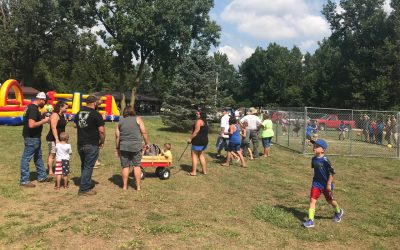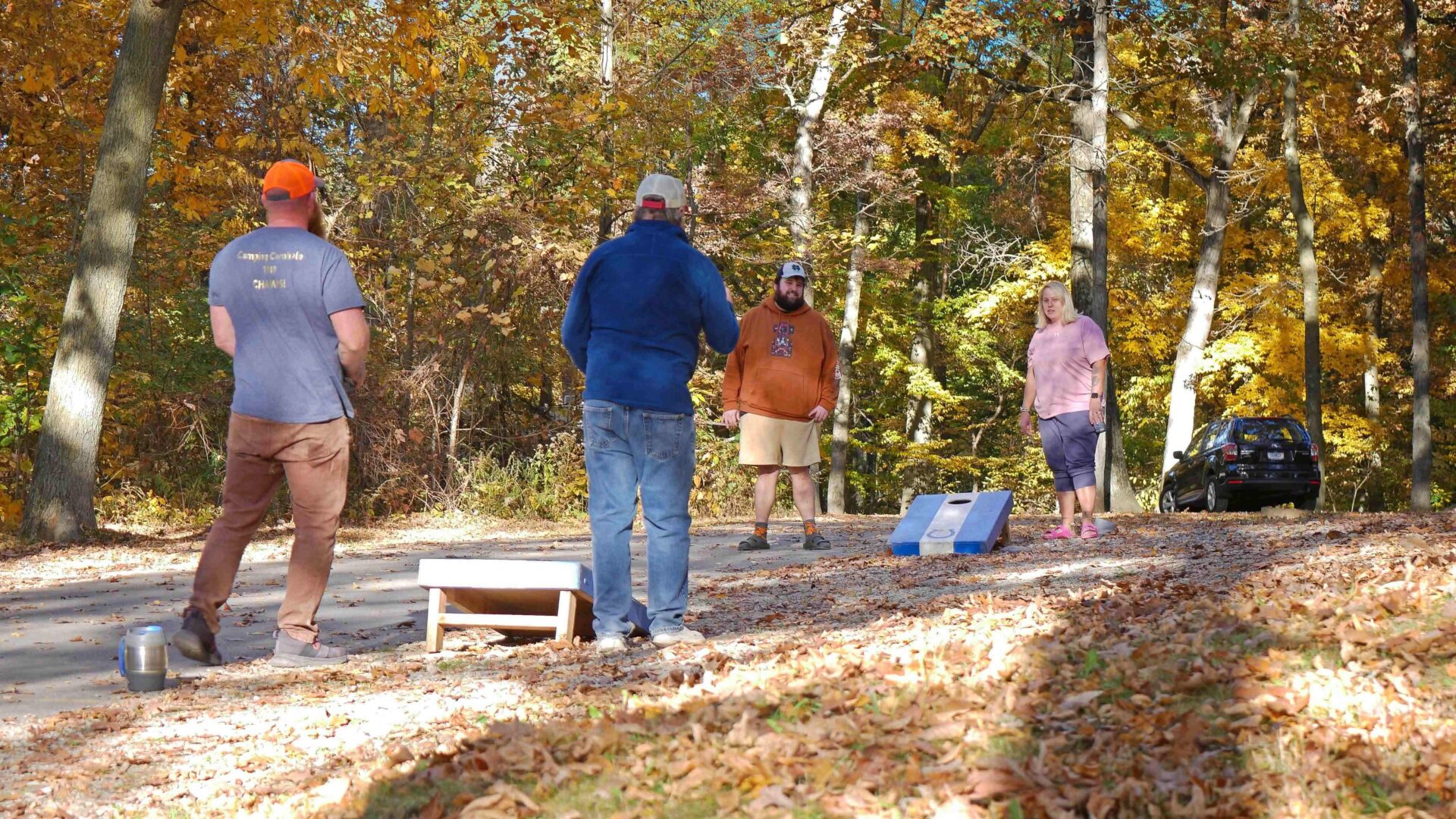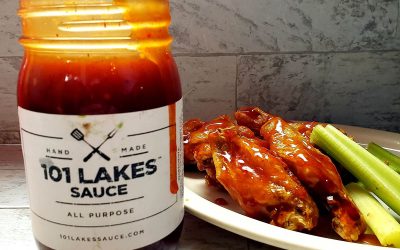Post Office Mural
In the main hallway of the Steuben Community Center, near the center of the building that once housed the high school, hangs a piece of 20th Century art history.
Post office mural
In the main hallway of the Steuben Community Center, near the center of the building that once housed the high school, hangs a piece of 20th Century art history. It is a long narrow mural, 4 ½ x 12 feet, featuring a stylized view of a 1930s Indiana farm.
The painting, titled “Hoosier Farm,” was created in 1937 by Charles Campbell, an Ohio artist. It was painted for the Angola Post Office which once sat at the southeast corner of Martha Street and East Maumee. The painting was relocated to the Community Center when the old post office – a building that didn’t meet the modern requirements of access – was replaced and demolished in the 1990s.
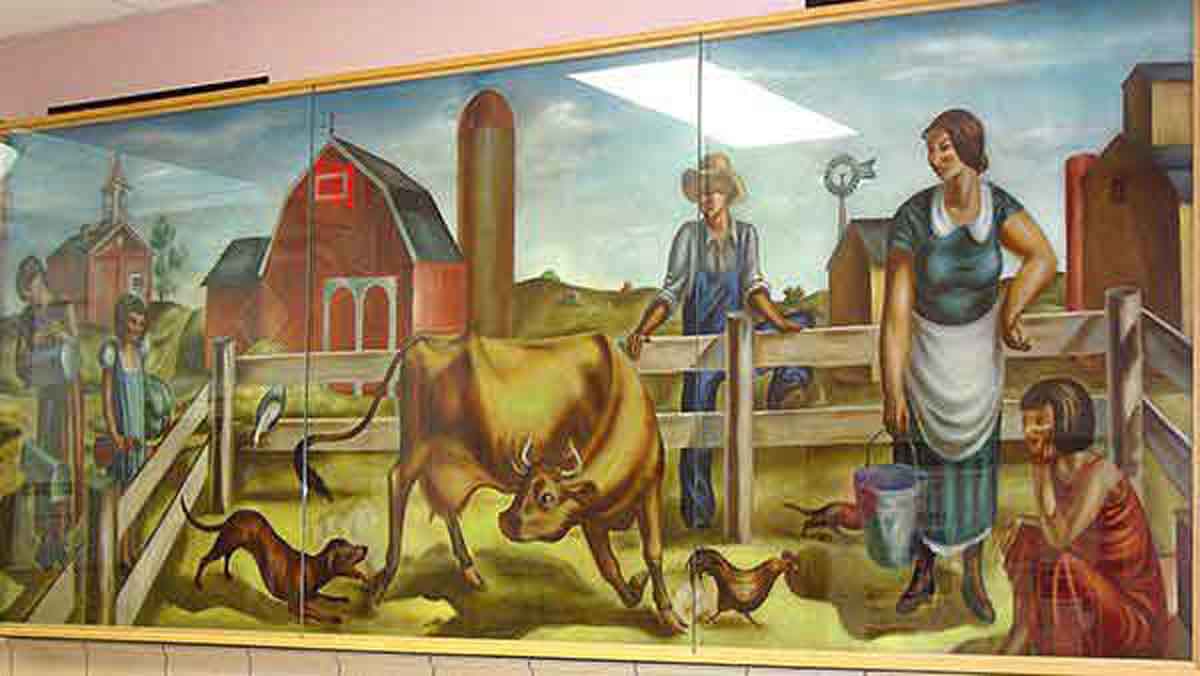
The mural was part of a Depression-relief program overseen by the U.S. Treasury Department with the dual purposes of providing jobs for out-of-work artists and bringing artwork to local communities. Post offices were selected as the location for the public art, with murals usually placed over the door of the postmaster’s office, because post offices were buildings that nearly everyone in a community visited.
Mural commissions were awarded by competition with the Treasury Department often inviting artists to apply. Artists provided ideas and sketches for a painting and a committee selected the mural to be produced. Artists from the region where the post office was located were given preference, but the projects were not limited to local painters. The artists were encouraged, though, to create scenes which related to the community where the mural would be displayed.
The artist selected for the Angola commission, Charles Malcolm Campbell (1905-1985), was an Ohio native who resided in Cleveland. He studied for five years at the Cleveland School of Art, graduating in 1929. He taught at the art school for a year, but decided that teaching was not for him. He began working for a newspaper doing commercial artwork while continuing to paint and sketch and enter his work into juried exhibitions. His paintings were displayed at the Cleveland Art Museum, Chicago Art Institute, Whitney Museum, Museum of Modern Art, and the Smithsonian. Like many artists of his time, Campbell was not financially successful in the difficult days of the Depression. His commercial and newspaper work didn’t pay well. Federal art projects offered a way to supplement his income. When a post office mural project was announced for Cleveland, Campbell entered drawings into the competition. Although his designs were not selected, the competition judges liked his work and encouraged him to bid on the Angola project. He was awarded the contract of $600 in late March 1937. The mural, which is painted on stretched canvas, was completed in Campbell’s studio and installed in the post office in late 1937.
The painting depicts a farm family in and around the milk cow’s pen. Mother and a young daughter are in the pen with the cow, Mother carrying a bucket for the milk which will be collected. Other family members – presumably a father in overalls and two daughters, one young and one a teen – look on from outside the wooden fence as the family dog nips at the cow and chickens wander. In the distance are barns and silos, a windmill, and a school. In a nod to the postal service, there are two mailboxes in the lower left corner of the painting – one mounted on a high post and one on a low post. The older daughter has her hand in the high mailbox, likely reaching for the day’s post. It’s doubtful the scene represents any particular place in Steuben County. It is more likely the artist’s general representation of a Hoosier farm.
One would think that in a county where farm life was common, a mural depicting a family farm would be very popular. It seems that may not have been the case…at least not according to a contemporary newspaper account. An editorial in the November 24, 1937 edition of the Steuben Republican is almost humorously critical of the painting. The editorial states “not being versed as an artist, we hesitate to attempt the description of the work” and then goes on to individually describe each figure, animal and structure in the painting and make suggestions!
Some of the cutting comments are:
“There is compacted into that 4 ½ by 12 feet more farm life than one ordinarily finds in less than 40 acres.”
“In the absence of a title we would suggest ‘Old MacDonald Had A Farm – But No Ducks.’ ”
“… we lack the artistic viewpoint, but we wish someone would write a review of this picture for publication which would do justice to the idea of the artist in his execution of this theme.”
“…we cannot help but say that the artist would have been a little more true to Steuben County if, off in the distance, he would have put a flash of one of our beautiful lakes and a touch of our beautiful rolling hills, or had he depicted some of our fine crops and blooded cattle, or even had put in a true to soil good looking farm wife and girls…”
The editorial ends with this zinger: “…we venture the assertion that most of the people of Steuben County would have preferred very much that this $600 had been spent in building a modern front that would enclose the steps to the post office, which become icy and treacherous in winter.” Ouch!
Charles Campbell apparently survived the newspaper’s critique. He went on to paint a post office mural in Kennedy, Texas, and other federally-funded murals in Cleveland. He was contracted by the Treasury Department through 1942 to produce other paintings, two of which are now in the Smithsonian collection. He continued to paint and sell his work in galleries in California and New Orleans for the remainder of his life.
“Hoosier Farm” may be seen in the Steuben Community Center during regular business hours.
Pleasant Lake Days
Everyone was sitting at table cloth covered picnic tables under a pavilion so we sat down to enjoy...
Pokagon State Park
Pokagon is also home to the state’s only refrigerated toboggan. Open weekends the day after Thanksgiving through the last weekend in February, the toboggan is a great family activity.
101 Lake Sauce
101 Lakes Sauce is an “all purpose sauce good on everything except ice cream and cereal.” Purchase locally at Fremont Village Foods or the Bent Fork in downtown Angola. The sauce is also used on The Venue’s wings!
101 Lakes Pontoon Rentals
New pontoons with daily and weekly rentals. Will deliver to lake cottages or any public access site.
(260) 316-9152
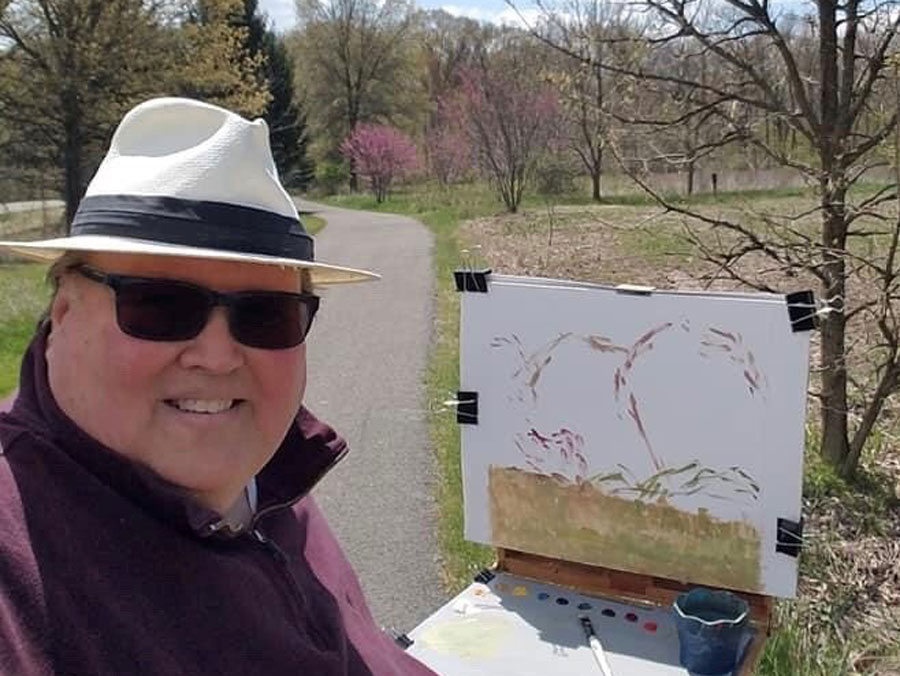
Douglas Runyan is a retired lawyer, landscape painter and art collector who moved to Steuben County in 2018. He enjoys painting on location and in his Jimmerson Lake studio. He is known for his snow scenes and works depicting rural scenes, schooners and commercial fishing boats in pastel, gouache, oil and acrylic. His paintings have been accepted and received awards in more than 50 local, regional and state juried exhibits, including Indiana Heritage Arts, Hoosier Salon, Ventures in Creativity and Richmond Art Museum. Since Doug and his wife, Laura, moved to Jimmerson Lake, he has enjoyed painting local landmarks, Autumn and Spring scenes from the state parks and views of the lakes. He has studied art in workshops with national and regional painters and taught painting classes for Fort Wayne Artlink, Fort Wayne Artists Guild, and Steuben Arts Scene. He exhibits and sells his work at Castle Gallery in Fort Wayne, the Brown County Art Gallery and Indiana Heritage Arts Gallery in Nashville, and Folly Cove Fine Art in Rockport, Massachusetts. He has been guest curator for exhibits at the Fort Wayne Museum of Art, Brown County Art Gallery, and Garrett Museum of Art. His interest in art includes researching and writing about art history, particularly the artists of Indiana’s Brown County Art Colony and Massachusetts’ Cape Ann Art Colony. He has authored articles published in American Art Review, exhibit catalogs for Indiana Heritage Arts, and an essay on the Cape Ann paintings of C. Curry Bohm published in the book “C. Curry Bohm: Brown County and Beyond.” Doug is a lifetime member of the Fort Wayne Artists Guild, a board member of Steuben Arts Scene, and a member of Indiana Heritage Arts.

